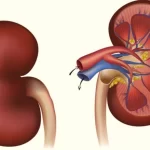Definition of yoga
Yoga is the science of improving or developing the power inherent in a person in a balanced manner. It provides the means for human beings seeking to attain complete self-realization. The literal meaning of the Sanskrit word yoga is ‘yoke’. Yoga can therefore be defined as a means of uniting the individual soul with the universal spirit of God. According to Maharishi Patanjali, Yoga is the suppression of modifications of the mind.
Yoga is a universal practical discipline
Yoga practice and application are universal, irrespective of culture, nationality, race, caste, creed, gender, age, and physical condition. It can be achieved by neither reading scriptures nor wearing the guise of an ascetic. Is. Without practice, one cannot realize the usefulness of yogic techniques nor realize their inherent potential. Only regular practice (sadhana) creates a pattern for their upliftment in body and mind. There must be a deep will in the practitioner to experience higher levels of consciousness through training of the mind and refinement of the total consciousness.
Yoga as a growth-oriented process
Yoga is an evolutionary process in the development of human consciousness. The development of total consciousness does not necessarily begin in an individual, but only when one chooses to initiate it. Alcohol and drug use, overwork, too much sex, and indulging in other stimulants can lead to forgetfulness, which leads to unconsciousness. Indian yogis begin at the point where Western psychology ends. If Freud’s psychology is the psychology of disease and Maslow’s psychology is the psychology of the healthy person, then Indian psychology is the psychology of self-knowledge. In yoga, the question is not of the psychology of the individual but higher consciousness. It is not even a question of mental health, it is a question of spiritual development.
Yoga as Spirit Healing
All paths of yoga (Japa, karma, bhakti, etc.) have the potential for healing to eliminate the effects of pain. But to reach the ultimate goal, a person needs guidance from some Siddha Yogi who has already achieved the ultimate goal by following the same path. The particular path is chosen very carefully keeping in mind one’s qualifications, either with the help of a competent counselor or in consultation with a Siddha Yogi.
Types of yoga
- Japa Yoga: Concentrating on the name of the Supreme Soul or the sacred syllables ‘Om’, ‘Rama’, ‘Allah’, ‘Prabhu’, ‘Wahe Guru’, etc., by repeatedly reciting or remembering.
- Karma Yoga: Teaches us to do all the work without any desire for the fruits. In this sadhana, the yogi considers his duty as a divine act and performs it with full devotion but avoids all other desires.
- Jnana Yoga: teaches us to distinguish between the self and the non-self and the knowledge of spiritual existence through the study of scriptures, the association of ascetics, and the methods of meditation.
- Bhakti Yoga: Bhakti yoga is a system of intense devotion with an emphasis on complete surrender to the will of the divine. A true follower of Bhakti Yog is humble, free from ego, and unaffected by the duality of the world.
- Raja Yoga: Popularly known as “Ashtanga Yoga”, Raja Yog is for all-round development of human beings. These are Yama, Niyama, Asana, Pranayama, Pratyahara, Dharana, Dhyana and Samadhi.
Kundalini
Kundalini yoga is a part of the Tantric tradition. Since the emergence of creation, Tantriks, and yogis have realized that in this physical body, the Mooladhara chakra—one of the seven chakras—has profound energy. The location of Kundalini is a small gland at the base of the spinal cord. In the male body, it is located in the Muladhara between the urinary and waste removal organs. Its location in the female body is at the root of the uterus in the cervix.
Those people who have awakened this supernatural power have been called Rishi, Prophet, Yogi, Siddha, and other names according to time, tradition, and culture. To awaken Kundalini you have to prepare yourself through the techniques of yoga such as Shadakriya, Asana, Pranayama, Bandha, Mudra, and Dhyana. Kundalini’s awakening results in an explosion in the brain as dormant or sleeping areas begin to bloom like flowers.
Pulses
As described in yogic texts, Nadis are flows of energy that we can visualize at the mental level as separate channels, light, sound, color, and other characteristics. The entire network of pulses is so vast that their exact number is different in different yogic texts. References in the Goraksha Shatak or Goraksha Samhita and Hatha Yoga Pradipika put their number at 72,000; Which emerged from the navel center – Manipura Chakra. Of all the thousands of pulse, Sushumna is said to be the most important. Shiva Swarodaya tells about the ten major pulses which are the main ‘doors’ for the passage in and out of the body. Of these ten, Ida, Pingala, and Sushumna are the most important, they are high voltage wires that carry energy to the substations or chakras located along the spine.
National Level Institute for Yoga in India
Morarji Desai National Institute of Yoga, New Delhi
Morarji Desai National Institute of Yog (MDNIY) is an autonomous organization registered under the Societies Registration Act, 1860 and fully funded by the Department of AYUSH, Ministry of Health and Family Welfare, Government of India.
The institute is located in the heart of Lutyens’ Zone, ie 68, Ashoka Road, New Delhi, amidst the beautiful landscape of the capital city of India.
Considering the tremendous potential of Yog as health science, especially for stress-related psychosomatic diseases, the former Central Council for Research in Indian System of Medicine and Homeopathy, taking into account the year In 1970, Vishwayatan Yogashram, then a private institution was approved as a five-bedded Yog Research Hospital. The Central Research Institute for Yog (CRIY) was established on January 1, 1976, after realizing the importance and effectiveness of yoga practices in the form of preventive, promotive, and curative aspects known from scientific studies carried out in the field. and the employees working in Yoga Anusandhan Hospital were given regular appointments.
The main activities of CRIY were free yoga training for the general public and scientific research on various practices of yoga. Until 1998, CRIY remained an institution for planning, promoting, and coordinating Yog and research training. Realizing the growing importance of Yog across the country apart from increasing activities and providing high-quality services, a National Institute was established and merged with the Central Institute of Yoga Research (CRIY) to form Morarji Desai National Institute of Yoga (MDNIY). It was decided to name






